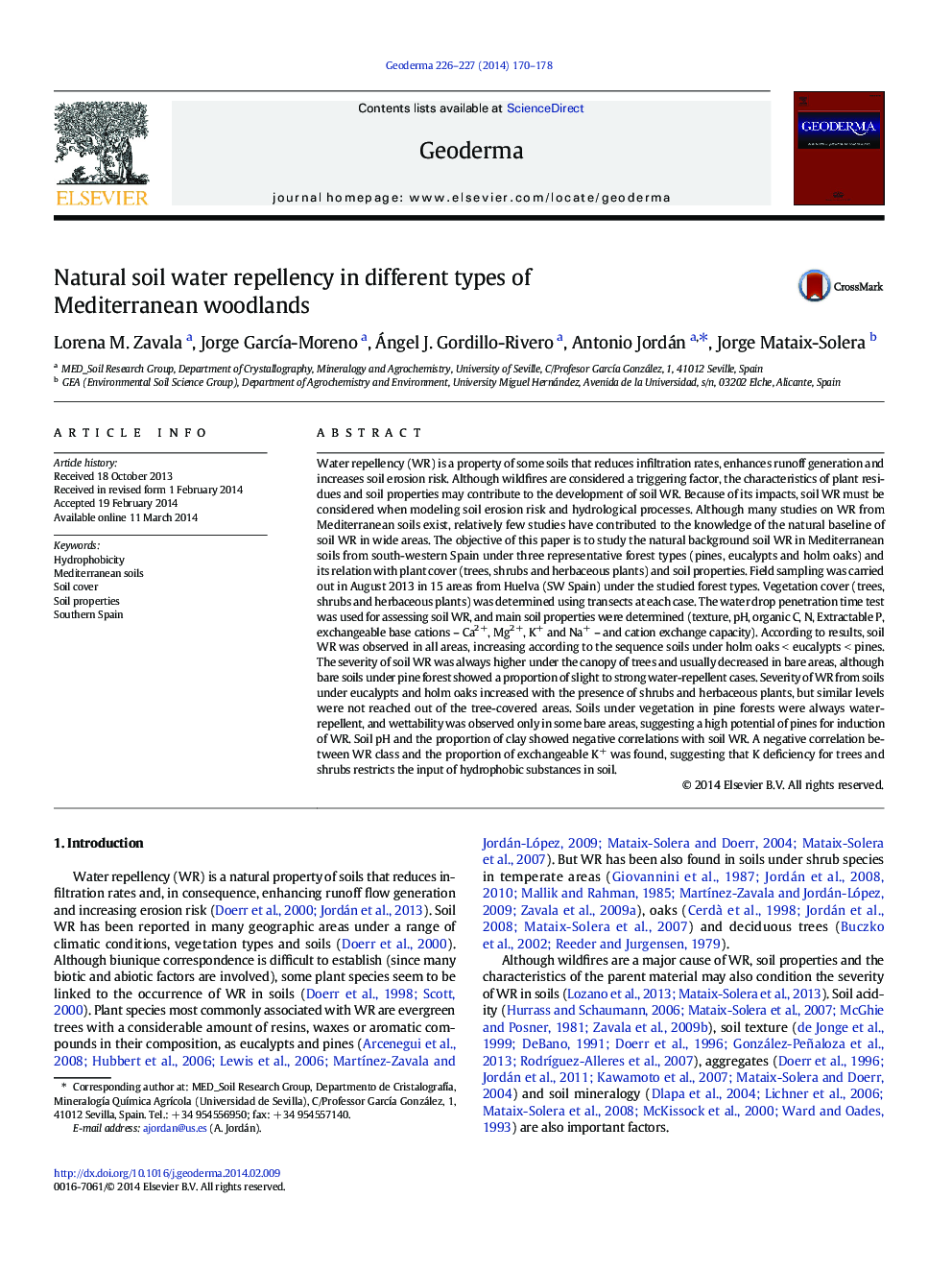| کد مقاله | کد نشریه | سال انتشار | مقاله انگلیسی | نسخه تمام متن |
|---|---|---|---|---|
| 6408861 | 1629472 | 2014 | 9 صفحه PDF | دانلود رایگان |
- Soil water repellency has been characterized in a wide Mediterranean area.
- Relations between soil water repellency and soil properties have been studied.
- Soil water repellency under tree, shrub and herbaceous cover has been studied.
- Hydrophobicity increases according to the sequence bare soil.
- Soil acidity and coarse particles contribute to enhanced water repellency.
Water repellency (WR) is a property of some soils that reduces infiltration rates, enhances runoff generation and increases soil erosion risk. Although wildfires are considered a triggering factor, the characteristics of plant residues and soil properties may contribute to the development of soil WR. Because of its impacts, soil WR must be considered when modeling soil erosion risk and hydrological processes. Although many studies on WR from Mediterranean soils exist, relatively few studies have contributed to the knowledge of the natural baseline of soil WR in wide areas. The objective of this paper is to study the natural background soil WR in Mediterranean soils from south-western Spain under three representative forest types (pines, eucalypts and holm oaks) and its relation with plant cover (trees, shrubs and herbaceous plants) and soil properties. Field sampling was carried out in August 2013 in 15 areas from Huelva (SW Spain) under the studied forest types. Vegetation cover (trees, shrubs and herbaceous plants) was determined using transects at each case. The water drop penetration time test was used for assessing soil WR, and main soil properties were determined (texture, pH, organic C, N, Extractable P, exchangeable base cations - Ca2 +, Mg2 +, K+ and Na+ - and cation exchange capacity). According to results, soil WR was observed in all areas, increasing according to the sequence soils under holm oaks < eucalypts < pines. The severity of soil WR was always higher under the canopy of trees and usually decreased in bare areas, although bare soils under pine forest showed a proportion of slight to strong water-repellent cases. Severity of WR from soils under eucalypts and holm oaks increased with the presence of shrubs and herbaceous plants, but similar levels were not reached out of the tree-covered areas. Soils under vegetation in pine forests were always water-repellent, and wettability was observed only in some bare areas, suggesting a high potential of pines for induction of WR. Soil pH and the proportion of clay showed negative correlations with soil WR. A negative correlation between WR class and the proportion of exchangeable K+ was found, suggesting that K deficiency for trees and shrubs restricts the input of hydrophobic substances in soil.
Journal: Geoderma - Volumes 226â227, August 2014, Pages 170-178
